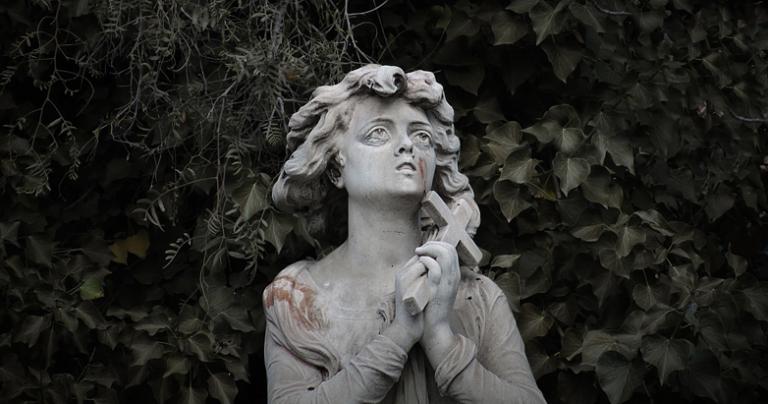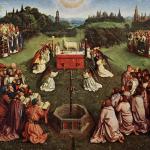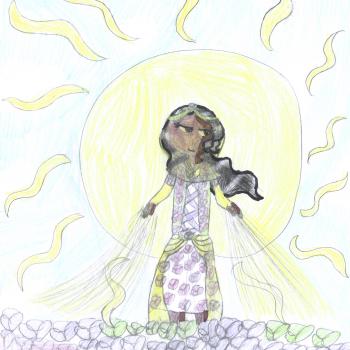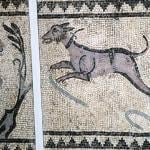
The medieval mystic known as Julian of Norwich wrote that Jesus Christ is “our true Mother.” Her writings recount God “showing” divine love in a familiar Trinitarian formulation, but a very unconventional application of gendered roles and metaphors to the three Persons. And yet, if we have eyes to see and ears to hear, is the maternity of Jesus not evident from the story of Good Friday?
Let us begin with the end of the Passion. When Jesus is pierced shortly after their death, blood and water flow out, the very same fluids that flow from a mother giving birth. We can see here the tragic image of a mother who has just died in childbirth. Jesus identifies with the ancient and universal reality that maternity is life-threatening at the same time as it is life-giving.
But before Jesus can give their life in the act of giving birth, they must experience all the pains and humiliations of womanhood under a harsh patriarchy. Jesus began this radical solidarity by being betrayed by a man who purported to provide for the material needs of Jesus’s family of disciples, but in actuality took a bride price in exchange for turning Jesus over to the control of a torturous authority. The “passions” that lead to this kind of maternity are not those of lust or even holy desire, but helplessness, fear, pain, and sorrow unto death.
Though the religious and secular leaders claimed plenary power over Jesus’s body and reputation, life and death, Jesus refused to testify in their own defense, voluntarily adopting the voicelessness of women in the courts and culture of the day. Jesus was stripped naked and physically violated by this cruel new master, putting up no resistance or complaint, knowing it would be futile, and also that something wonderful could yet be conceived out of this horror. Jesus then had to bear a painful and heavy burden throughout the long walk to the delivery place of Calvary. Jesus was mocked for claiming to be the child of God and king of the Judeans, much as a woman would be mocked for claiming to be equal to man and progenitor of her own child.
Thankfully, a dead mother with a screaming, helpless newborn would not be the end of the story. The newborn church would have died soon thereafter if it had no sustenance due to Jesus’s death. Rather, Jesus returned to feed this newborn with their own body. Instead of taking the form of milk it has appeared in the form of bread and wine, but sustenance provided by Jesus’s own body nonetheless. In their resurrected form, Jesus can continuously give birth to new Christians and nurse them with the Eucharist without having to endure the suffering of the first birth again.
This is what I see as “good” about Good Friday—it was the completion of God’s maternal suffering. It obviously did not end all suffering and death in the corporeal sense, but it began the flow of divine milk for the spiritual life and comfort of the world. Henceforth, we are all invited to suckle from Jesus, our true Mother, while gazing into the eyes of the One who was willing to suffer every pain, humiliation, and even death to give us this life.












